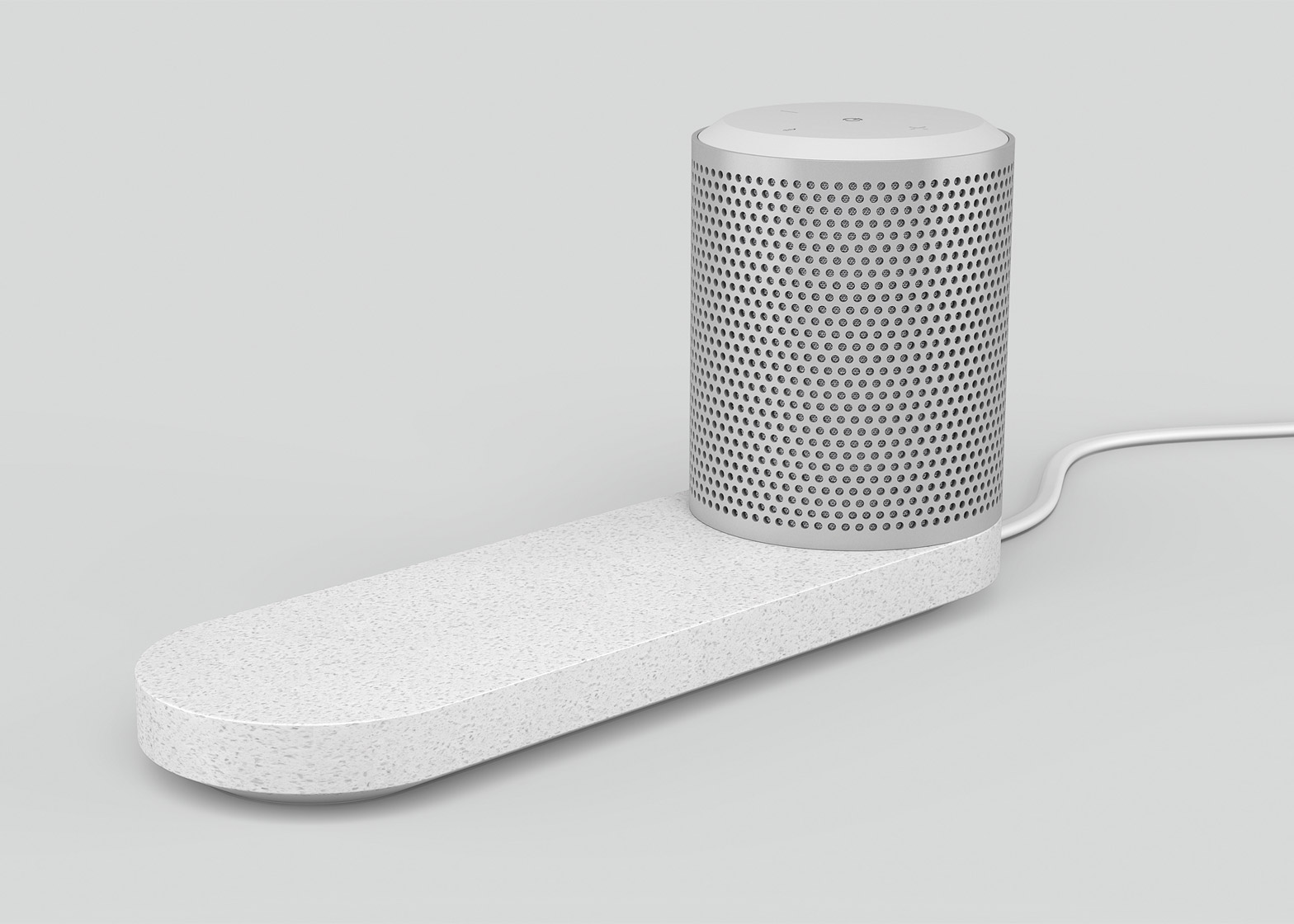The demand for stylish home accessories with built-in induction charging is set to boom according to London studio Blond, which has created a portable cylindrical speaker that comes with a wireless charging tray (+ slideshow).
The Duo speaker and charging tray by Blond are the result of a case study carried out by the studio into the future of wireless charging in the home.
The oblong-shaped charging tray is made from solid-surface material Corian, and features a circular indent where the speaker can be placed and wirelessly powered.
Other objects, including mobile phones and Apple Watches, can be also be charged when placed on the tray's surface.
"Induction charging will soon become a major fixture within interiors everywhere, forcing the technology – and consumer electronics in general – to become more interior focused," James Melia, director at Blond, told Dezeen.
"Most large consumer electronics brands offer an induction charging solution," added the studio. "However, many have yet to approach the technology in a manner that allows the product to sit comfortably and effortlessly within the home environment."
Wireless charging, also known as induction charging, powers up mobile devices by using an electromagnetic field to transfer energy.
When in contact, a magnetically charged coiled wire within the station induces a current in another coil located in the device, which can then use that energy to charge its own battery.
Ikea is aiming to make furniture with integrated induction charging affordable to the masses with a range of furniture and homeware, while London studio Layer has designed a set of slip-cast ceramic trays with an integrated charging system similar to Blond's concept.
"Currently, the method of charging your mobile devices through induction provides little more than an added convenience and is desired only by the tech savvy; Blond expects this to change," said the studio.
Blond said it specifically chose not to use the plastics more commonly found in electronics products for Duo.
"Instead of plastics, tactile and emotive materials were selected that would be at home in a modern interior," it continued. "Duo suggests how consumer electronics brands can utilise their existing technology, yet target an increasingly style and interior-conscious consumer."









